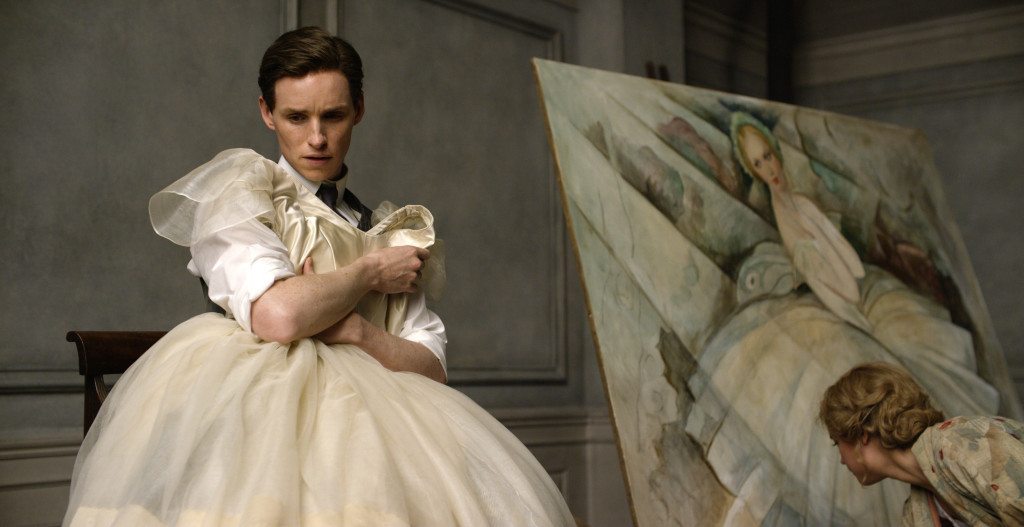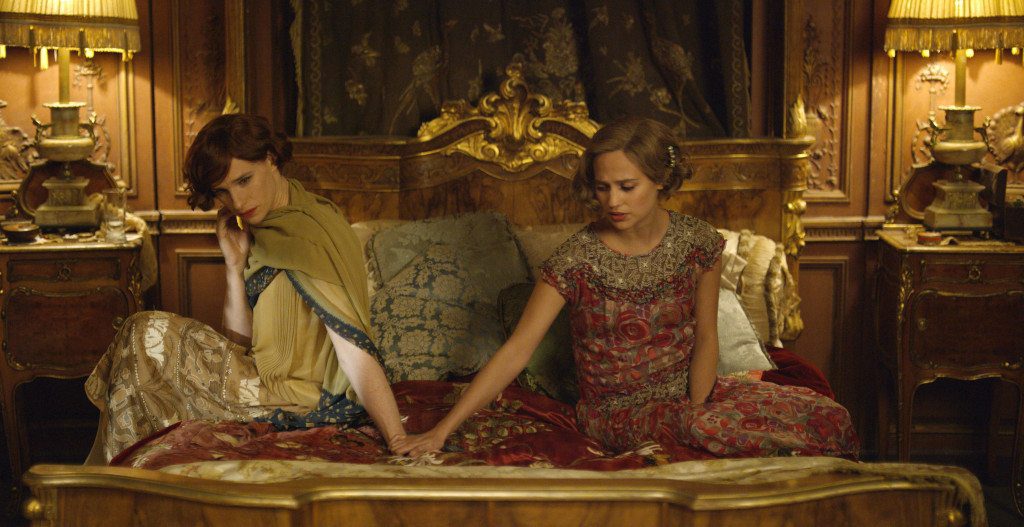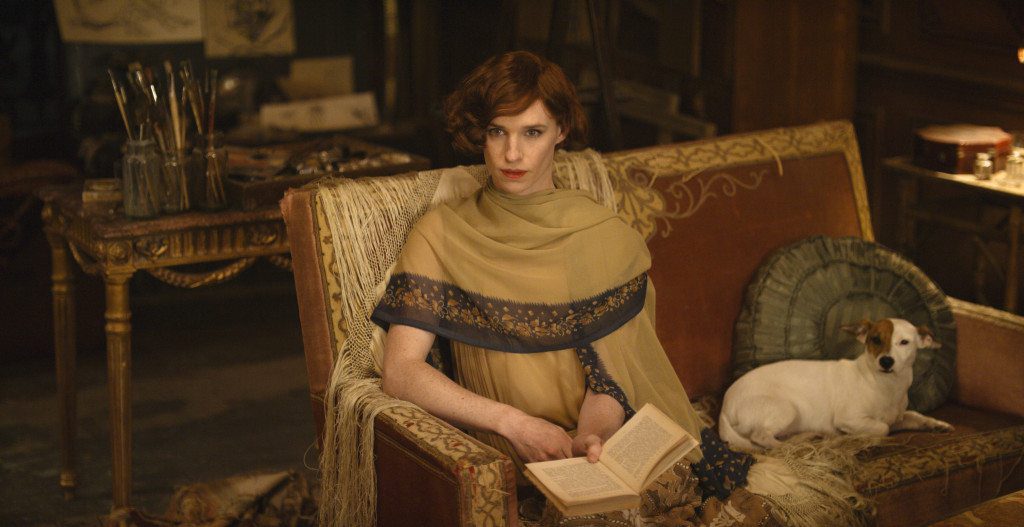?It doesn?t matter what I wear. It?s what I dream. They?re Lili?s dreams.?
The Danish Girl opens in Copenhagen in 1926. Einar and Gerda Wegener (Eddie Redmayne and Alicia Vikander) are artists who are very happily married. Einar is a successful landscape painter, while Gerda struggles as a portrait artist. One day, with a deadline looming, Gerda asks Einar to model a dress and shoe. The experience triggers a gender confusion in Einar. When, as a lark, Gerda dresses Einar as a woman to go to a party, the back and forth between male and female identity escalates. Soon Einar is going out surreptitiously as Lili and begins to view his true identity as a woman. Soon two personae emerge. Einar and Lili have two very different lives.

There is a minor trend in media of stories of transgendered persons?people who identify as a gender other than is manifested in their physical body. Now there are procedures and surgeries that allow people to become who they see as their true selves. We have rules for how to treat transgendered people in school. But when Einar/Lili had to deal with that struggle, the word ?transgender? did not even exist. The only explanations most people had were either moral outrage or psychological pathology. Lili eventually became the first person to undergo sexual reassignment surgery?risking her life to live the life she believed was hers.
The Danish Girl is at its heart a love story. Einar and Gerda are very much in love. As Einar transitions to Lili, that love is often tested, but it overcomes those difficulties as Gerda serves as Lili?s key support in the very difficult situation. Watching Lili kiss a man is a very challenging event for Gerda. She simultaneously sees her husband and his alter ego. Within that love story there is also a story of grief, because as Lili becomes the dominant manifestation, Einar is in effect dying. Lili, as much as Gerda loves her, is not her husband whom she has loved for many years. Einar and Gerda had a very collaborative life as artists, but when Lili emerges, she is not an artist. She does however serve as a muse for Gerda.
I think one of the difficulties in watching a film about someone who is transgendered is that it is very difficult for those of us who have an internal gender that matches our assigned gender to truly understand what that is like and the pain associated with the conflict within. When Lili and Gerda meet with the doctor who will perform surgery on her, she tells him, ?This is not my body, Professor. Please take it away.? Because all this can seem so strange to viewers, I think it makes Gerda the more sympathetic character. We may feel Einar/Lili?s suffering, but we can much more identify with the pain that Gerda must deal with.
Compassion is the key quality that this film seeks to instill in viewers. By having compassion for Lili, we learn to have compassion for other transgendered persons. By watching Gerda?s compassion for Einar and Lili we understand that compassion is not an easy task. Sometimes the act of being compassionate is not superficial, but rather must be pulled up from the depths of our souls if it is to find expression.
Photos courtesy Focus Features







